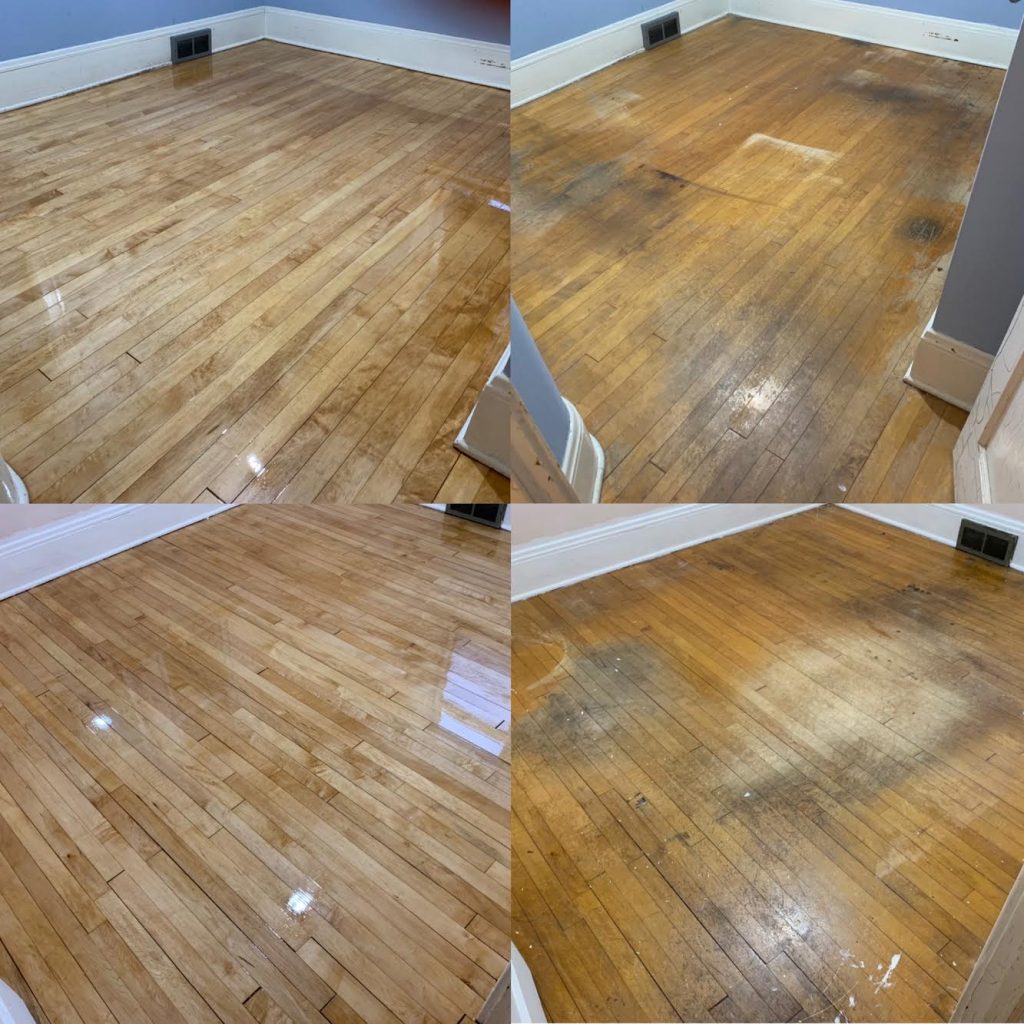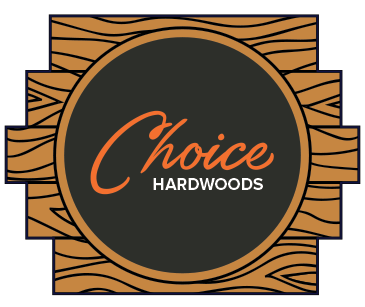How Can I Fix Scratches In My Hardwood Floor?

Hardwood floors are prized for their natural beauty and long-lasting durability, but even the toughest of hardwoods aren’t immune to scratches. Whether it’s caused by a dropped object, the claws of a pet, or simply everyday wear and tear, scratches can mar the appearance of your otherwise flawless floors. While scratches are inevitable, the good news is that many of them can be fixed, often restoring the floor to its former glory. At Choice Hardwoods, we specialize in helping homeowners deal with the varying degrees of damage that can occur to hardwood floors, and we understand that not all scratches are created equal.
In this article, we’ll explore the different types of scratches, ranging from minor surface scratches to deeper gouges that penetrate the wood and finish. We’ll also discuss several methods for repairing scratches, including how simple touch-ups and screen and coat techniques can restore small imperfections, as well as when more extensive repairs, such as full refinishing or even board replacement, are necessary. One of the most challenging aspects of fixing scratches is “spot-fixing”—we’ll explain why this is difficult, especially when trying to match the existing finish, and provide tips on how to handle the repair process.
Understanding the Types of Scratches in Hardwood Floors
Before we dive into repair techniques, it’s essential to understand the nature of the scratches on your hardwood floor. The way a scratch behaves—its depth, its impact on the finish, and whether it penetrates the stain or wood—will largely determine the best way to fix it.
1. Surface Scratches (Polyurethane Only)
The most common type of scratch on hardwood floors is one that only damages the polyurethane finish on the surface of the wood. Polyurethane is a clear protective coating applied over the hardwood to shield it from moisture, dirt, and wear. When the polyurethane layer is scratched, the wood underneath remains untouched, so while the floor may look less than perfect, the integrity of the wood is intact.
- Characteristics: These scratches are typically shallow and do not penetrate beyond the protective polyurethane layer. They may look like small lines or marks on the surface but won’t feel deep to the touch. Often, they appear as light abrasions caused by furniture legs, shoes, pet nails, or dropped items.
- Repairability: Surface scratches are the easiest to fix and can often be addressed with a simple touch-up, spot treatment, or even a screen and coat—a light sanding followed by a fresh application of finish.
2. Scratches That Penetrate the Finish and Stain
When a scratch penetrates both the polyurethane layer and the stain or sealer underneath, it becomes more problematic. The sealer or stain is responsible for giving your hardwood floor its color and depth, and when it’s damaged, it’s not just a cosmetic issue—it can affect the overall look of your floor.
- Characteristics: These scratches are deeper than surface scratches and are often caused by sharp objects, such as furniture that is dragged across the floor or dropped heavy items. The damage will likely have an appearance that contrasts with the surrounding wood, showing light, uncolored areas where the stain has been removed.
- Repairability: This kind of damage requires more effort. Simply sanding and refinishing just the scratched area is usually not enough to restore the appearance. A complete refinishing of the affected area or even the entire floor may be necessary, especially if the damage is significant or widespread.
3. Deep Gouges and Scratches That Expose the Wood
The most severe scratches are those that gouge the actual wood beneath the finish and stain, leaving visible indentations, rough patches, or splinters. These are often caused by accidents such as dropped heavy tools, furniture or appliances, or pet damage.
- Characteristics: Deep gouges will create visible indentations in the wood that can’t be “sanded out” without affecting the structure of the floor. In these cases, the wood is damaged beyond the point of cosmetic repair.
- Repairability: Deep gouges are difficult to repair with simple methods. In most cases, these kinds of scratches will require board replacement or, at the very least, a significant portion of the floor to be refinished.
Repairing Minor Scratches: The Easy Fix
If your scratches are surface-level or only affect the polyurethane finish, you’re in luck—these types of scratches are the easiest to fix. Here are the common methods for repairing minor scratches:
1. Touch-Up Pens or Markers
One quick and effective solution for small, surface-level scratches is to use a touch-up pen or marker designed specifically for hardwood floors. These pens contain a stain that closely matches the color of your floor, allowing you to fill in small scratches or imperfections.
- How It Works: Simply use the pen to color in the scratch, following the grain of the wood. Once applied, the stain will blend into the surrounding floor, making the scratch less noticeable. These pens are particularly useful for light, shallow scratches on a stained and finished floor.
- Pros: Quick, easy, and inexpensive.
- Cons: This method works best for very light, surface-level scratches and may not be effective on deeper damage or gouges.
2. Wax Fillers
Another solution for surface scratches is wax fillers. These products are available in sticks or crayons and are designed to fill in and conceal scratches by matching the color of your floor.
- How It Works: You apply the wax directly to the scratched area, then buff it out with a cloth. The wax will fill the scratch, helping to conceal it and prevent dirt from accumulating in the damaged area.
- Pros: Simple to apply and doesn’t require extensive tools.
- Cons: May wear off over time, especially in high-traffic areas, and may not fully match the surrounding wood’s color.
3. Screen and Coat
If the damage is slightly more significant but still limited to the surface layer (i.e., just the polyurethane), a screen and coat can be an effective solution. This method involves lightly sanding the damaged area to remove the old polyurethane and then applying a new coat of finish.
- How It Works: A screen is used to lightly scuff the surface of the floor, followed by the application of a fresh coat of polyurethane. This method works well for addressing surface scratches or areas where the finish has worn thin but does not affect the stain.
- Pros: Effective for restoring shine and protecting the floor. It can fix localized scratches without needing to refinish the entire floor.
- Cons: If the damage extends beyond the finish layer, a screen and coat won’t be enough to restore the floor’s appearance completely.
Repairing Deeper Scratches: More Involved Solutions
When scratches go deeper and affect the stain or the wood itself, the repair becomes more complicated. Spot fixing becomes particularly difficult here, especially if you’re trying to match the existing finish or wood grain.
1. Refinishing the Affected Area
For deeper scratches that go through the stain and finish and into the wood, you’ll often need to refinish the affected area. This is typically done by sanding down the damaged portion of the floor, reapplying stain, and then finishing with a protective coat of polyurethane.
- How It Works: The area around the scratch is sanded down to remove the existing finish and exposed stain. Then, a new layer of stain is applied to match the surrounding area. After the stain dries, a fresh coat of polyurethane is applied to protect the floor. This process can be time-consuming and requires skill to match the color and texture of the surrounding wood.
- Pros: Effective at restoring the look of the floor when scratches are more than just superficial. You’ll get a finish that looks like new.
- Cons: Requires time, effort, and skill, and the repairs may not always be perfect if the surrounding area doesn’t match exactly.
2. Board Replacement
In some cases, the scratches or gouges are so deep that board replacement becomes the only viable solution. This typically happens if the wood is seriously gouged or dented, or if the damage has compromised the structural integrity of the floor.
- How It Works: A damaged board is carefully removed, and a new, matching board is installed. The new board is sanded, stained, and finished to blend seamlessly with the existing floor. This is often the best option for extreme damage, particularly if it involves large gouges or missing wood.
- Pros: Effective for fixing significant damage. The floor will look like new once the board is replaced.
- Cons: Can be labor-intensive and may require the purchase of new hardwood. Matching the new wood with the existing floor can sometimes be challenging.
The Challenge of Spot-Fixing Scratches
One of the main challenges with repairing scratches in hardwood floors is the difficulty of matching the existing finish and stain. Hardwood floors naturally age over time, and the color of the wood can change due to exposure to sunlight, moisture, and other factors. This means that trying to touch up or repair a specific area can be challenging, especially if you’re attempting a “spot fix.”
If you are trying to repair a small section, the new stain or finish may not blend perfectly with the surrounding wood. The result can be a patchy or uneven appearance that draws attention to the repair rather than blending it in.
This is why professional refinishing services are often the best option when dealing with significant damage. With the right tools and expertise, professional floor refinishers can seamlessly match the stain and finish, ensuring that your floor looks uniform and natural.

